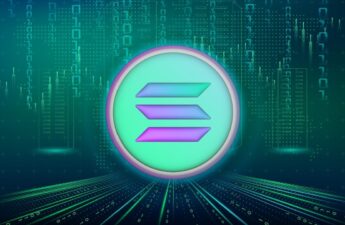For centuries, people have collected things. Some of these things may be nostalgic items like ticket stubs or lucky coins. Others might be especially rare items, like classic cars or limited-edition vintage watches.
In many ways, the things we collect become a reflection of who we are. Whether they are physical objects we hold in our hands, experiences we keep in our minds, or digital artifacts we admire on a screen — the items we collect are a reflection of us.
Oftentimes, we end up having deep attachments to the most unique items we collect at various stages of our lives.
Scarcity drives value
When things are in scarce supply, only a very limited number of people in the world can own them. This exclusivity often makes them highly appealing to prospective collectors. As a result, the high demand for these limited items typically leads to higher prices.
This relationship between scarcity and price is the driving mechanism behind much of the collectibles market. Rare items, whether they are pristine trading cards from a player’s rookie year or modern art masterpieces, are simply hard to come by. Because of that, people are willing to pay a premium to own them.
The market for limited-edition toys, stamps, and artwork is worth over $300 billion, according to a UnivDatos Markets Insights report. But even these figures pale in comparison to the potential of a relatively new form of collectibles.Non-fungible tokens (NFTs) represent the next generation of collectibles. These digital tokens have already begun opening the doors to entirely new revenue-generating opportunities. While collectibles have traditionally relied on an intermediary to verify authenticity and ownership, NFTs allow a distributed group of individuals to share this responsibility.

NFTs are trackable, digital tokens that are immutably linked to unique tangible or intangible objects. These tokens are used to reference the current owner of an item. Items can be anything from a computer file stored on someone else’s hard drive, or a physical item kept in a safety deposit box.
Regardless, all NFTs live on blockchains. This technology provides a fully transparent, globally accessible, and censorship-resistant method for tracking and storing ownership information. This factor allows anyone in the world to purchase and provably own items no matter where they exist in the world.
Generally speaking, any NFT has the potential to be collectible. However, there are some NFT-linked items that creators purposefully build to be collectible. Oftentimes, creators launch NFTs as part of a very limited collection or based on an existing franchise. Examples of these include, TIME: Pieces Build a Better Future, Damien Hirst: The Currency, and Anthony Hopkins’ The Eternal Collection.

Clockwise: TIME, The Currency, The Eternal
Beyond their aesthetic qualities, different NFT-based collections offer a range of different perks and benefits to their owners.
Some collections focus heavily on the benefits of NFT community membership, hosting live events for their members to network and build relationships.
Others allow individuals to track ownership over unique digital items in metaverse experiences such as Decentraland and The Sandbox. Play-to-earn games such Axie Infinity and Star Atlas have also integrated NFTs. This feature allows players to truly own the in-game assets they accrue. Based on their accomplishments within these games, individuals can earn items that have real-world value in the form of NFTs.
What advantages do NFTs bring to the collectibles market?
Because NFTs exist as purely digital records that point (most commonly) to intangible items, they offer several unique advantages over physical collectibles, including:
Verifiable authenticity (without an intermediary): Anyone with an internet connection can verify an NFT’s authenticity. By copying and pasting a wallet address, anyone can investigate any NFT. This verifiable authenticity avoids third-party costs and provides an unquestionable degree of certainty about the NFTs authenticity. While it is true that the media of an NFT can be copied, blockchain technology makes it easy to track which NFT is real and which is a counterfeit.
Immutable ownership: Similar to their ability to track authenticity, NFTs make it easy to track who is the rightful owner of an authentic NFT. When you purchase an original NFT, a blockchain network cryptographically stores proof of your ownership on the blockchain. This system provides a highly secure and tamper-resistant way of tracking ownership.
Global reach: The decentralized nature of blockchain technology makes it easy for NFTs to have a worldwide presence. Because NFTs are effectively digital collectibles, it’s much easier to connect and organize groups with fellow holders no matter their geographic location. Additionally, when buying or selling NFTs, it’s usually much easier to access liquid secondary markets than when dealing with physical collectible items.
Damage-proof: Certain physical collectibles must be in perfect condition to maintain their value. NFTs, on the other hand, have no physical form and cannot degrade or suffer damage over time.
Personal safety: The pseudonymous nature of blockchain-based NFTs means holders can buy, own, and trade these assets without needing to share their identities.

What do collectible NFTs offer?
NFTs have value for the same reasons physical collectibles do: they’re scarce, aesthetically unique, and they represent membership in a community of fellow owners.
Additionally, some NFTs display traits that end up being rarer than other traits within the collection. These qualities allow individuals to quantify the rarity of different NFTs and base their numerical value on this score.
Beyond rarity rankings, holders of certain NFT collections have begun creating their own exclusive communities that offer members-only access to private channels and platforms. Bored Ape Yacht Club (BAYC), Doodles, and Cool Cats are all examples of NFT membership-based communities. This process adds an extra layer of utility to collectible NFTs and aims to keep demand for these limited assets high.
Whether you believe digital collectibles offer the same “value” as physical ones or not, there’s no denying that the market is gaining global interest. With sales already rivaling the prices of some extremely valuable physical collectibles, we’re definitely in uncharted — and exciting — territory.
Interested in starting your own NFT collection? Sign up for Kraken NFT today!
Source: https://blog.kraken.com/why-buy-an-nft-collectibility




